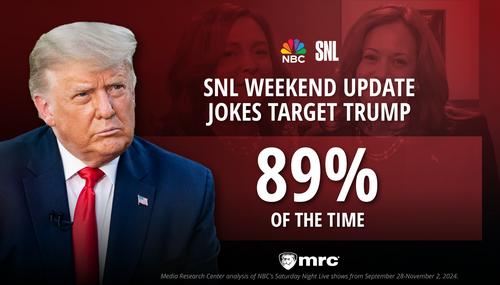The New York Times continues its unabashed promotion of homosexuality even into Holy Week, with not one but two hopelessly slanted April Fool's Day “reports” on homosexual themes.
The Sunday, April 1 Times stories are so pro-“gay,” the paper appears to be thanking GLAAD (Gay and Lesbian Alliance Against Defamation) for the two media awards the group awarded the Times last week for its reporting of homosexuality issues.
Lesbian Lip-Lock Prominently Featured
In a full-color send up to the “world's largest lesbian party,” the front page of the Sunday Styles section features two young women kissing. “Daughters of the Dinah,” an article by reporter Melena Ryzik, covers the Dinah Shore Weekend in
Ryzik details how the event has evolved from “B.E.” (before Ellen DeGeneres) days when the event featured “polo-shirted women seeking a low-key weekend getaway,” to the current “A.L.” days (after The L Word, a Showtime series featuring lesbians), “a fashionable bacchanal” complete with celebrity guests and corporate sponsors. Business vying “for the attention of a community that is suddenly much more visible, and visibly wealthy” include “clothing boutiques, brand-name liquors, television shows and sperm banks.”
Ryzik also acknowledges the promiscuity rampant at the Dinah Shore Weekend, celebrating the event's “real attraction: girls, girls, girls.” She quotes a 23-year-old freelance writer who said she was “newly out” to her parents and was hoping to find a “hook-up” at the “most extravagantly lesbian” event.
The article features a closeup photo of two women's chests adorned with name tags with red dots. According to Ryzik, a red dot means the person is “unavailable,” green means “available” and yellow means “approachable.” The article states some nametags were “plastered with a rainbow of dots.”
Ryzik describes a bikini-and-fishnet-clad go-go dancer who wiggles “her behind for an appreciative crowd of women” at the beginning of the article, then uses the same picture to wrap up the piece, detailing how the mood of the opening night parties is “unrestrained.”
As if to make the point that it is not just young women who are “Daughters of the Dinah,” Ryzik ends the article by describing a 57-year-old woman staring at the go-go dancer. The older woman, “with elegantly close-cropped silver hair, a matching gray silky blouse and dark glasses” reportedly has been attending these Dinah parties for 23 years. According to Ryzik, she says this is the “best women's week on the planet” and there is “lots of eye candy.” As the dancer was “gyrating and taking money out of people's mouths with her own,” the older woman “pulled a wad of bills out of her bra, folded a $5 bill and moved closer to the platform.”
Gay Teens are Happy Teens
Continuing the pro-homosexual drumbeat, the In the Region section of the April 1 Times runs an article encouraging children to decide at an early age that they are homosexual. In “Accepting Gay Identity, and Gaining Strength,” Reporter Michael Winerip spotlights a
Winerip seemingly promotes these parents as heroes in the culture war. They were so accepting of their son's revelation, Winerip writes, that they drove him to a gay therapist and helped him find a gay youth group. His father took him to a gay-lesbian conference. His therapist took him to a Gay Bingo Night at a church in
The teen recounts being named Miss Congeniality by the bingo crowd, and being crowned with tiara and sash. He says, “I was the future. Most of the men were middle-aged or older, and to see this 14-year-old out, they loved it. They were so happy.”
The only negatives in Winerip's feature are the “misery” the teen experienced before accepting his gay identity and incidents of bullying the teen endured after coming out in seventh grade.
Otherwise, Winerip paints a very rosy picture. He quotes writer Dan Woog, a founder of the gay youth group OutSpoken, who believes teenagers are coming out sooner “because the Internet makes them feel less isolated and they're seeing positive role models in the media.” The young teen featured in the story confirms this view by saying he spent his first therapy session “talking about the gay characters on Will and Grace as a way to test the therapist's attitudes.”
The article ends by quoting the teen's parents, “'Coming out was the best thing for him…' We ask him, 'Why didn't you come out in fifth grade?'”
When it comes to promoting homosexuality over traditional values, The New York Times doesn't even try to hide its agenda. “Gay” is good. Thinking otherwise is intolerant.
Kristen Fyfe is senior writer at the Culture and Media Institute (www.cultureandmediainstitute.org), a division of the





